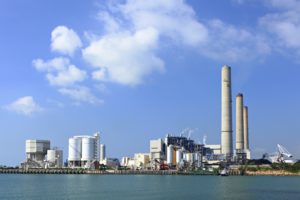Stating that it needs to review data developed by industry, the EPA has proposed to postpone compliance dates contained in the Agency’s effluent limitations guidelines (ELGs) and standards for the steam electric power generating point source category (November 3, 2015, FR). The EPA is requesting comment on how long the postponement should last while appearing to suggest that 2 years would be appropriate.

The deadlines for complying with pollutant limits are as early as November 1, 2018, for direct dischargers and no later than November 1, 2018, for indirect dischargers.
Petitions
The proposal responds to several petitions, including a 110-page letter sent on March 24, 2017, to EPA Administrator Scott Pruitt by the Utility Water Act Group (UWAG). That petition stated that power plants are not able to meet the effluent limits with the technologies the EPA identified as the best available technology (BAT) economically achievable.
“Actual costs are, therefore, much higher than EPA predicted,” wrote the UWAG. “Either plants cannot comply at all or they are being forced to design, test, and try unproven technologies in addition to, or in lieu of, the model technologies in the hope of developing a compliance strategy. The Rule should be reconsidered so that its true costs can be accounted for, as required by the Clean Water Act.”
In an April 5, 2017, letter, the Small Business Administration Office of Advocacy also petitioned the EPA for reconsideration of the ELGs.
One week later, Pruitt wrote to the petitioners that the EPA would reconsider the rule. Also, in a notice, Pruitt announced that the Agency was requesting that the 5th Circuit stay pending litigation against the ELGs for 120 days (until September 12, 2017), “by which time the Agency intends to inform the Court of the portions of the rule, if any, that it seeks to have remanded to the Agency for further rulemaking.” In its proposal, the EPA notes that the 5th Circuit has granted its request and placed the case in abeyance.
Old and New Technologies
In the 2015 rule, the EPA noted that the rise of new processes for generating electric power (e.g., coal gasification) and the widespread implementation of air pollution controls (e.g., flue gas desulfurization [FGD]and flue gas mercury control [FGMC]) have created new types of wastewater at many steam electric power plants, particularly coal-fired plants.
“The processes employed and pollutants discharged by the industry look very different today than they did in 1982,” stated the EPA. “Many plants, nonetheless, still treat their wastewater using only surface impoundments, which are largely ineffective at controlling discharges of toxic pollutants and nutrients.”
In the rule, the EPA decided to base the required limits on newer technologies it claimed were in the marketplace and already found effective. For example, the EPA decided to base its limit for FGD wastewater on a biological treatment technology, which, the Agency said, “has been tested at power plants for more than 10 years and demonstrated in full-scale systems for more than seven years.”
No Concession of Error
But in its petition, the UWAG claimed that actual experience is confirming that all the FGD limits cannot be met with biological treatment at all facilities.
“A recent pilot study using the biological treatment technology EPA selected as BAT has been conducted at a [plant that burns Powder Ridge Basin coal or lignite], and indications are that the data show the selenium limits cannot be met,” wrote the UWAG. Other facilities are finding that technologies beyond those considered by the EPA may be necessary to meet the FGD limits.”
In its proposal, that Agency states that in light of these imminent planning and capital expenditures, it believes it is appropriate to postpone the compliance dates that have not yet passed.
“This will preserve the regulatory status quo with respect to waste streams subject to the rule’s new, and more stringent, limitations and standards, while the reconsideration is underway,” says the EPA. “While EPA is not making any concession of error with respect to the rulemaking, the far-ranging issues contained in the reconsideration petitions warrant careful and considerate review of the rule, as well as relief from the certain deadlines under the Rule while EPA considers the issues raised by petitioners. The postponement of compliance dates through this action is intended as a temporary, stopgap measure to prevent the unnecessary expenditure of resources until EPA completes reconsideration of the 2015 rule. EPA solicits comments on whether this postponement should be for a specified period of time, for example, two years.”
The proposed postponement is here.
